- Home
- L. Frank Baum
Complete Works of L. Frank Baum
Complete Works of L. Frank Baum Read online
THE COMPLETE WORKS OF
L. FRANK BAUM
(1856–1919)
Contents
The Oz Works
THE WONDERFUL WIZARD OF OZ
THE MARVELOUS LAND OF OZ
THE WOGGLE-BUG BOOK
OZMA OF OZ
DOROTHY AND THE WIZARD IN OZ
THE ROAD TO OZ
THE EMERALD CITY OF OZ
THE PATCHWORK GIRL OF OZ
LITTLE WIZARD STORIES OF OZ
TIK-TOK OF OZ
THE SCARECROW OF OZ
RINKITINK IN OZ
THE LOST PRINCESS OF OZ
THE TIN WOODMAN OF OZ
THE MAGIC OF OZ
GLINDA OF OZ
THE ROYAL BOOK OF OZ by Ruth Plumly Thompson
Other Fantasy Works
THE MAGICAL MONARCH OF MO
DOT AND TOT OF MERRYLAND
AMERICAN FAIRY TALES
THE MASTER KEY: AN ELECTRICAL FAIRY TALE
THE LIFE AND ADVENTURES OF SANTA CLAUS
THE ENCHANTED ISLAND OF YEW
QUEEN ZIXI OF IX
JOHN DOUGH AND THE CHERUB
THE SEA FAIRIES
SKY ISLAND
Non-Fantasy Works Under Baum’s Name
THE DARING TWINS
PHOEBE DARING
The Pseudonym Works – Fantasy
TWINKLE AND CHUBBINS
POLICEMAN BLUEJAY
The Pseudonym Works – Non-Fantasy
AUNT JANE’S NIECES
AUNT JANE’S NIECES ABROAD
AUNT JANE’S NIECES AT MILLVILLE
AUNT JANE’S NIECES AT WORK
AUNT JANE’S NIECES IN SOCIETY
AUNT JANE’S NIECES AND UNCLE JOHN
AUNT JANE’S NIECES ON VACATION
AUNT JANE’S NIECES ON THE RANCH
AUNT JANE’S NIECES OUT WEST
AUNT JANE’S NIECES IN THE RED CROSS
THE FLYING GIRL
THE FLYING GIRL AND HER CHUM
MARY LOUISE
MARY LOUISE IN THE COUNTRY
MARY LOUISE SOLVES A MYSTERY
MARY LOUISE AND THE LIBERTY GIRLS
MARY LOUISE ADOPTS A SOLDIER
THE BOY FORTUNE HUNTERS IN ALASKA
THE BOY FORTUNE HUNTERS IN PANAMA
THE BOY FORTUNE HUNTERS IN EGYPT
THE BOY FORTUNE HUNTERS IN CHINA
THE BOY FORTUNE HUNTERS IN YUCATAN
THE BOY FORTUNE HUNTERS IN THE SOUTH SEAS
THE FATE OF A CROWN
DAUGHTERS OF DESTINY
TAMAWACA FOLKS: A SUMMER COMEDY
ANNABEL, A NOVEL FOR YOUNG FOLK
THE LAST EGYPTIAN
Shorter Fiction
OUR LANDLADY
MOTHER GOOSE IN PROSE
ANIMAL FAIRY TALES
UNCOLLECTED SHORT STORIES
The Short Stories
LIST OF SHORT STORIES IN CHRONOLOGICAL ORDER
LIST OF SHORT STORIES IN ALPHABETICAL ORDER
The Poetry Collections
BY THE CANDELABRA’S GLARE
FATHER GOOSE: HIS BOOK
THE ARMY ALPHABET
THE NAVY ALPHABET
FATHER GOOSE’S YEAR BOOK
The Poems
LIST OF POEMS IN CHRONOLOGICAL ORDER
LIST OF POEMS IN ALPHABETICAL ORDER
The Plays
THE MAID OF ARRAN
THE WIZARD OF OZ
THE MAID OF ATHENS
THE KING OF GEE-WHIZ
THE PIPES O’ PAN
Baumiana
LIST OF BAUM RELATED ARTICLES AND PIECES
The Biography
IN OTHER LANDS THAN OURS by Maud Gage-Baum
© Delphi Classics 2012
Version 1
THE COMPLETE WORKS OF
L. FRANK BAUM
By Delphi Classics, 2012
Interested in classic children’s literature?
Then you’ll love these eBooks:
These comprehensive editions are beautifully illustrated with the original artwork of some of the greatest children stories ever told, as well as offering a dazzling array of Delphi bonus features. Now you can rediscover the magic of these eternal classics on your eReader!
www.delphiclassics.com
The Oz Works
Baum’s birthplace, Chittenango, New York
Baum, aged 12, dressed in his cadet uniform
1901 promotional poster for L. Frank Baum’s books
THE WONDERFUL WIZARD OF OZ
L. Frank Baum’s most famous book, The Wonderful Wizard of Oz, appeared in 1900, published by George M. Hill Company, and illustrated by noted Chicago artist and caricaturist, W. W. Denslow. He had worked with Baum on two earlier books, including the successful, Father Goose: His Book, published a year earlier. However, after Baum and Denslow quarrelled, they parted ways and John R. Neill became illustrator for the remainder of Baum’s Oz tales. The Wonderful Wizard of Oz was an immediate success, selling out its initial run of 10,000 copies and quickly selling out additional printings. Baum’s classic tale of a young Kansas girl whisked off by a tornado to a magical land both enchanted and enchanting, continues to engage and thrill readers of all ages more than a century later, so popular that it led to a plethora of Oz books written at first by Baum and then by others. Its enduring popularity prompted numerous stage and film adaptations, most spectacularly the 1939 MGM Technicolor motion picture starring Judy Garland, which altered some of Baum’s story, but brought to vivid life its spirit.
A first edition copy of The Wonderful Wizard of Oz
CONTENTS
Introduction
1. The Cyclone
2. The Council with the Munchkins
3. How Dorothy Saved the Scarecrow
4. The Road Through the Forest
5. The Rescue of the Tin Woodman
6. The Cowardly Lion
7. The Journey to the Great Oz
8. The Deadly Poppy Field
9. The Queen of the Field Mice
10. The Guardian of the Gate
11. The Wonderful City of Oz
12. The Search for the Wicked Witch
13. The Rescue
14. The Winged Monkeys
15. The Discovery of Oz, the Terrible
16. The Magic Art of the Great Humbug
17. How the Balloon Was Launched
18. Away to the South
19. Attacked by the Fighting Trees
20. The Dainty China Country
21. The Lion Becomes the King of Beasts
22. The Country of the Quadlings
23. Glinda The Good Witch Grants Dorothy’s Wish
24. Home Again
Poster for MGM’s classic 1939 motion picture starring Judy Garland
Poster for 1939 MGM motion picture starring Judy Garland
Judy Garland (as Dorothy Gale) reading The Wizard of Oz
Publicity still for 1939 MGM movie
Lobby Card for 1939 MGM film
Wizard of Oz sheet music from the 1939 film version
Poster promoting the release of the MGM movie in Spain, 1945
Sheet music from 1904
1903 Poster for Fred R. Hamlin’s musical
1903 poster for Fred R. Hamlin’s Musical
A scene from Fred R. Hamlin’s 1903 musical
A songbook from the Fred R. Hamlin musical, 1903
Publicity photo for a Wizard of Oz production by the Jack Singers, early 1900s.
Publisher’s advertising poster from 1901
1941 Spanish edition published in Buenos Aires
A 1940 Dutch translation
A 1940 Swedish translation
An Italian “movie” edition, publ
ished in 1944
A novelty edition from 1934 published by Blue Ribbon Books
Introduction
Folklore, legends, myths and fairy tales have followed childhood through the ages, for every healthy youngster has a wholesome and instinctive love for stories fantastic, marvelous and manifestly unreal. The winged fairies of Grimm and Andersen have brought more happiness to childish hearts than all other human creations.
Yet the old time fairy tale, having served for generations, may now be classed as “historical” in the children’s library; for the time has come for a series of newer “wonder tales” in which the stereotyped genie, dwarf and fairy are eliminated, together with all the horrible and blood-curdling incidents devised by their authors to point a fearsome moral to each tale. Modern education includes morality; therefore the modern child seeks only entertainment in its wonder tales and gladly dispenses with all disagreeable incident.
Having this thought in mind, the story of “The Wonderful Wizard of Oz” was written solely to please children of today. It aspires to being a modernized fairy tale, in which the wonderment and joy are retained and the heartaches and nightmares are left out.
L. Frank Baum
Chicago, April, 1900.
1. The Cyclone
Dorothy lived in the midst of the great Kansas prairies, with Uncle Henry, who was a farmer, and Aunt Em, who was the farmer’s wife. Their house was small, for the lumber to build it had to be carried by wagon many miles. There were four walls, a floor and a roof, which made one room; and this room contained a rusty looking cookstove, a cupboard for the dishes, a table, three or four chairs, and the beds. Uncle Henry and Aunt Em had a big bed in one corner, and Dorothy a little bed in another corner. There was no garret at all, and no cellar--except a small hole dug in the ground, called a cyclone cellar, where the family could go in case one of those great whirlwinds arose, mighty enough to crush any building in its path. It was reached by a trap door in the middle of the floor, from which a ladder led down into the small, dark hole.
When Dorothy stood in the doorway and looked around, she could see nothing but the great gray prairie on every side. Not a tree nor a house broke the broad sweep of flat country that reached to the edge of the sky in all directions. The sun had baked the plowed land into a gray mass, with little cracks running through it. Even the grass was not green, for the sun had burned the tops of the long blades until they were the same gray color to be seen everywhere. Once the house had been painted, but the sun blistered the paint and the rains washed it away, and now the house was as dull and gray as everything else.
When Aunt Em came there to live she was a young, pretty wife. The sun and wind had changed her, too. They had taken the sparkle from her eyes and left them a sober gray; they had taken the red from her cheeks and lips, and they were gray also. She was thin and gaunt, and never smiled now. When Dorothy, who was an orphan, first came to her, Aunt Em had been so startled by the child’s laughter that she would scream and press her hand upon her heart whenever Dorothy’s merry voice reached her ears; and she still looked at the little girl with wonder that she could find anything to laugh at.
Uncle Henry never laughed. He worked hard from morning till night and did not know what joy was. He was gray also, from his long beard to his rough boots, and he looked stern and solemn, and rarely spoke.
It was Toto that made Dorothy laugh, and saved her from growing as gray as her other surroundings. Toto was not gray; he was a little black dog, with long silky hair and small black eyes that twinkled merrily on either side of his funny, wee nose. Toto played all day long, and Dorothy played with him, and loved him dearly.
Today, however, they were not playing. Uncle Henry sat upon the doorstep and looked anxiously at the sky, which was even grayer than usual. Dorothy stood in the door with Toto in her arms, and looked at the sky too. Aunt Em was washing the dishes.
From the far north they heard a low wail of the wind, and Uncle Henry and Dorothy could see where the long grass bowed in waves before the coming storm. There now came a sharp whistling in the air from the south, and as they turned their eyes that way they saw ripples in the grass coming from that direction also.
Suddenly Uncle Henry stood up.
“There’s a cyclone coming, Em,” he called to his wife. “I’ll go look after the stock.” Then he ran toward the sheds where the cows and horses were kept.
Aunt Em dropped her work and came to the door. One glance told her of the danger close at hand.
“Quick, Dorothy!” she screamed. “Run for the cellar!”
Toto jumped out of Dorothy’s arms and hid under the bed, and the girl started to get him. Aunt Em, badly frightened, threw open the trap door in the floor and climbed down the ladder into the small, dark hole. Dorothy caught Toto at last and started to follow her aunt. When she was halfway across the room there came a great shriek from the wind, and the house shook so hard that she lost her footing and sat down suddenly upon the floor.
Then a strange thing happened.
The house whirled around two or three times and rose slowly through the air. Dorothy felt as if she were going up in a balloon.
The north and south winds met where the house stood, and made it the exact center of the cyclone. In the middle of a cyclone the air is generally still, but the great pressure of the wind on every side of the house raised it up higher and higher, until it was at the very top of the cyclone; and there it remained and was carried miles and miles away as easily as you could carry a feather.
It was very dark, and the wind howled horribly around her, but Dorothy found she was riding quite easily. After the first few whirls around, and one other time when the house tipped badly, she felt as if she were being rocked gently, like a baby in a cradle.
Toto did not like it. He ran about the room, now here, now there, barking loudly; but Dorothy sat quite still on the floor and waited to see what would happen.
Once Toto got too near the open trap door, and fell in; and at first the little girl thought she had lost him. But soon she saw one of his ears sticking up through the hole, for the strong pressure of the air was keeping him up so that he could not fall. She crept to the hole, caught Toto by the ear, and dragged him into the room again, afterward closing the trap door so that no more accidents could happen.
Hour after hour passed away, and slowly Dorothy got over her fright; but she felt quite lonely, and the wind shrieked so loudly all about her that she nearly became deaf. At first she had wondered if she would be dashed to pieces when the house fell again; but as the hours passed and nothing terrible happened, she stopped worrying and resolved to wait calmly and see what the future would bring. At last she crawled over the swaying floor to her bed, and lay down upon it; and Toto followed and lay down beside her.
In spite of the swaying of the house and the wailing of the wind, Dorothy soon closed her eyes and fell fast asleep.
2. The Council with the Munchkins
She was awakened by a shock, so sudden and severe that if Dorothy had not been lying on the soft bed she might have been hurt. As it was, the jar made her catch her breath and wonder what had happened; and Toto put his cold little nose into her face and whined dismally. Dorothy sat up and noticed that the house was not moving; nor was it dark, for the bright sunshine came in at the window, flooding the little room. She sprang from her bed and with Toto at her heels ran and opened the door.
The little girl gave a cry of amazement and looked about her, her eyes growing bigger and bigger at the wonderful sights she saw.
The cyclone had set the house down very gently--for a cyclone--in the midst of a country of marvelous beauty. There were lovely patches of greensward all about, with stately trees bearing rich and luscious fruits. Banks of gorgeous flowers were on every hand, and birds with rare and brilliant plumage sang and fluttered in the trees and bushes. A little way off was a small brook, rushing and sparkling along between green banks, and murmuring in a voice very grateful to a little girl who had lived
so long on the dry, gray prairies.
While she stood looking eagerly at the strange and beautiful sights, she noticed coming toward her a group of the queerest people she had ever seen. They were not as big as the grown folk she had always been used to; but neither were they very small. In fact, they seemed about as tall as Dorothy, who was a well-grown child for her age, although they were, so far as looks go, many years older.
Three were men and one a woman, and all were oddly dressed. They wore round hats that rose to a small point a foot above their heads, with little bells around the brims that tinkled sweetly as they moved. The hats of the men were blue; the little woman’s hat was white, and she wore a white gown that hung in pleats from her shoulders. Over it were sprinkled little stars that glistened in the sun like diamonds. The men were dressed in blue, of the same shade as their hats, and wore well-polished boots with a deep roll of blue at the tops. The men, Dorothy thought, were about as old as Uncle Henry, for two of them had beards. But the little woman was doubtless much older. Her face was covered with wrinkles, her hair was nearly white, and she walked rather stiffly.
When these people drew near the house where Dorothy was standing in the doorway, they paused and whispered among themselves, as if afraid to come farther. But the little old woman walked up to Dorothy, made a low bow and said, in a sweet voice:
“You are welcome, most noble Sorceress, to the land of the Munchkins. We are so grateful to you for having killed the Wicked Witch of the East, and for setting our people free from bondage.”

 The Wonderful Wizard of Oz
The Wonderful Wizard of Oz The Emerald City of Oz
The Emerald City of Oz The Story of Peter Pan, Retold from the fairy play by Sir James Barrie
The Story of Peter Pan, Retold from the fairy play by Sir James Barrie Sky Island
Sky Island Tik-Tok of Oz
Tik-Tok of Oz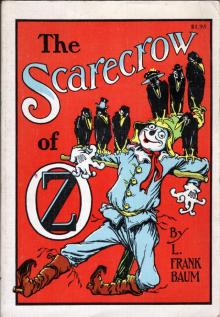 The Scarecrow of Oz
The Scarecrow of Oz The Sea Fairies
The Sea Fairies Glinda of Oz
Glinda of Oz The Lost Princess of Oz
The Lost Princess of Oz The Tin Woodman of Oz
The Tin Woodman of Oz Ozma of Oz
Ozma of Oz The Master Key
The Master Key The Enchanted Island of Yew
The Enchanted Island of Yew Rinkitink in Oz
Rinkitink in Oz The Magic of Oz
The Magic of Oz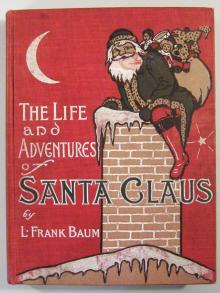 The Life and Adventures of Santa Claus
The Life and Adventures of Santa Claus The Marvelous Land of Oz
The Marvelous Land of Oz The Royal Book of Oz
The Royal Book of Oz The Road to Oz
The Road to Oz Dorothy and the Wizard in Oz
Dorothy and the Wizard in Oz The Patchwork Girl of Oz
The Patchwork Girl of Oz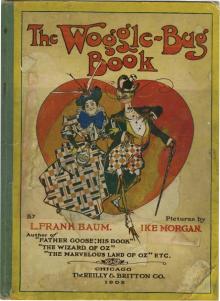 The Woggle-Bug Book
The Woggle-Bug Book Little Wizard Stories of Oz
Little Wizard Stories of Oz Yankee in Oz
Yankee in Oz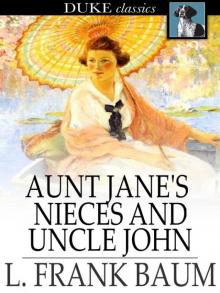 Aunt Jane's Nieces and Uncle John
Aunt Jane's Nieces and Uncle John Mary Louise
Mary Louise Prairie-Dog Town
Prairie-Dog Town Aunt Jane's Nieces at Millville
Aunt Jane's Nieces at Millville John Dough and the Cherub
John Dough and the Cherub Aunt Jane's Nieces in Society
Aunt Jane's Nieces in Society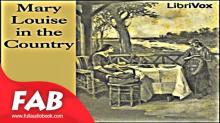 Mary Louise in the Country
Mary Louise in the Country Aunt Jane's Nieces Abroad
Aunt Jane's Nieces Abroad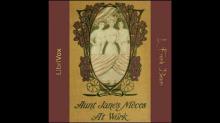 Aunt Jane's Nieces at Work
Aunt Jane's Nieces at Work Aunt Jane's Nieces on the Ranch
Aunt Jane's Nieces on the Ranch Aunt Jane's Nieces in the Red Cross
Aunt Jane's Nieces in the Red Cross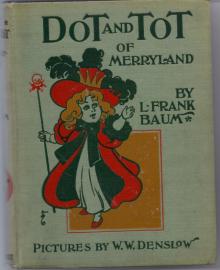 Dot and Tot of Merryland
Dot and Tot of Merryland Aunt Jane's Nieces on Vacation
Aunt Jane's Nieces on Vacation The Giant Horse Of Oz
The Giant Horse Of Oz The Hidden Valley of Oz
The Hidden Valley of Oz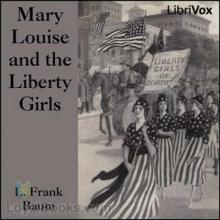 Mary Louise and the Liberty Girls
Mary Louise and the Liberty Girls Mary Louise Solves a Mystery
Mary Louise Solves a Mystery The Santa Claus Stories
The Santa Claus Stories Aunt Judith: The Story of a Loving Life
Aunt Judith: The Story of a Loving Life Aunt Jane's Nieces
Aunt Jane's Nieces Wonderful Wizard of Oz (Barnes & Noble Classics Series)
Wonderful Wizard of Oz (Barnes & Noble Classics Series) Oz, The Complete Collection
Oz, The Complete Collection Complete Works of L. Frank Baum
Complete Works of L. Frank Baum The Wizard of Oz
The Wizard of Oz Oz 10 - Rinkitink in Oz
Oz 10 - Rinkitink in Oz